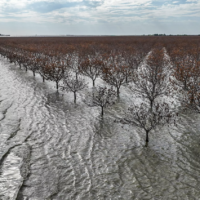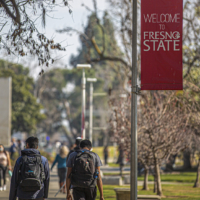UCLA Luskin Research Informs State’s Water Affordability Actions Effort for California Legislature represents the first statewide picture of California’s water affordability challenges
By Stan Paul
Researchers at the UCLA Luskin Center for Innovation helped develop and inform recommendations for a report released this week by the California State Water Resources Board aimed at establishing a statewide low-income rate assistance program for water.
The report was requested from the Water Board, within the California Environmental Protection Agency, by the California State Legislature via AB 401, which passed in 2015.
In creating the report, Water Board staff worked with UCLA lead investigator and author Gregory Pierce and Center for Innovation (LCI) colleagues Nicholas Chow, J.R. DeShazo and Kyra Gmoser-Daskalakis.
“We gathered and analyzed data on water rates, household incomes, and other low-income assistance programs to create the first statewide picture of California’s water affordability challenges,” said Pierce, LCI associate director and senior researcher for the center’s Water, Environmental Equity and Transportation programs.
To date no federal government or state has developed or administered a water rate assistance program, added Pierce, who is also an adjunct assistant professor of urban planning at the UCLA Luskin School of Public Affairs.
In California, about 13 million people (34%) live in households with income under 200% of the federal poverty level ($50,200 for a family of four in 2018). At the same time, retail cost of water has risen over the past decade and will continue to rise, while low-income households continue to struggle, according to the report. Among several reasons offered to support a statewide water affordability program include the fact that the majority of the state’s more than 3,000 water systems are too small to support low-income programs by themselves.
“Through research, we are broadly supporting efforts to implement policy to make the human right to water a reality,” said Pierce, explaining that affordability is one of three dimensions of the human right to water, which also includes quality and accessibility.
Recommended in the report is a three-part strategy to comprehensively address water affordability for low-income Californians, including those who pay indirectly through rent. The recommendations are: a direct water bill credit, a renter’s water credit, and water crisis assistance.
If implemented in full by lawmakers, the effort is expected to cost about $600 million in the first year. This would include administrative expenses as well as billing modifications.
The report also identifies possible revenue sources, including tax increases, which would require a two-thirds approval by the state legislature or voter approval via a ballot initiative.







Leave a Reply
Want to join the discussion?Feel free to contribute!